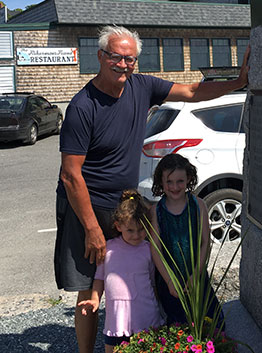The MAGA movement and its Republican representatives in Congress are attempting – working overtime in fact – and in plain sight to weaponize antisemitism to discredit opposition to Israel’s occupation and policy of genocide in Gaza as well as to divide the anti-MAGA movement ahead of the elections. That should be resisted. So should the spike in incidents and expressions of antisemitism that date back, at least, to Trump’s election in 2016.
President Biden in a televised evening address should speak to the country (and world) on the crisis and famine in Gaza. Among other things, he should say it is intolerable, insist on a permanent ceasefire and appeal to the global community to provide humanitarian assistance and the wherewithal to rebuild Gaza into a habitable place to live, work, and worship. This is as much a moral as a political imperative.
I don’t know what they are thinking in the White House, but it’s past time to demand a permanent ceasefire and freeze the weapons of war going to Israel. The people of Gaza are paying the steepest price – famine, not food insecurity, is widespread and only getting worse – for Biden’s political and moral failure. But Biden too – and by extension the American people – will pay a stiff price this summer and on election day for this failure.
Below is a portion of an article written by Stephen Walt, an international relations theorist and commentator, in Foreign Affairs. The article argues that the U.S. policy of unwavering support for Israel has been a complete failure. Here is an excerpt that I found interesting:
If you’re still upset that Iran has been smuggling weapons into the West Bank, ask yourself how you’d feel if the situation was reversed. Imagine that Egypt, Jordan, and Syria had won the Six-Day War in 1967, leading millions of Israelis to flee. Imagine that the victorious Arab states subsequently decided to permit Palestinians to exercise a “right of return” and establish a state of their own in some or all of Israel/Palestine. Suppose further that a million or so Israeli Jews had ended up as stateless refugees confined to a narrow enclave such as the Gaza Strip.
Then imagine that a group of former Irgun fighters and other Jewish hard-liners organized a resistance movement, gained control of the enclave, and refused to recognize the new Palestinian state. Moreover, they proceeded to obtain backing from sympathetic supporters around the world and began smuggling weapons into the enclave, which they used to attack nearby settlements and towns in the recently founded Palestinian state. And then suppose that Palestinian state responded by blockading and bombing the enclave, causing thousands of civilian deaths.
Given these circumstances, which side do you think the U.S. government would support? Indeed, would the United States have ever allowed a situation like this to emerge? The answers are obvious, and they speak volumes to the one-sided way in which the United States approaches this conflict.The tragic irony here is that the individuals and organizations in the United States that have been the most ardent in shielding Israel from criticism and pushing one administration after another to back Israel, no matter what it does, have in fact done enormous damage to the country that they were trying to help.
Consider where the “special relationship” has led over the past 50 years. The two-state solution has failed, and the question of the Palestinians’ future remains unresolved, in large part because the lobby made it impossible for U.S. presidents to put meaningful pressure on Israel. Israel’s ill-advised invasion of Lebanon in 1982 (part of a foolish scheme to consolidate Israeli control of the West Bank) led to the emergence of Hezbollah, which now threatens Israel from the north. Prime Minister Benjamin Netanyahu and other Israeli officials tried to weaken the Palestinian Authority and block progress toward a two-state solution by covertly backing Hamas, thereby contributing to the tragedy of Oct. 7.
Israel’s internal politics are more polarized than the United States’ (which is saying something), and its actions in Gaza, which most groups in the lobby defend at every turn, are helping turn it into a pariah state. Support among younger Americans—including many Jews—is cratering.And this unhappy situation has allowed Iran to champion the Palestinian cause, get closer to having a nuclear weapon, and thwart U.S. efforts to isolate it. If the American Israel Public Affairs Committee (AIPAC) and its allies were capable of self-reflection, they’d be mortified by what they have helped Israel do to itself.
By contrast, those of us who have criticized some of Israel’s actions—only to be falsely smeared as antisemites, Jew-haters, or worse—were in fact recommending policies that would have been better for the United States and Israel alike. Had our advice been followed, Israel would be safer today, tens of thousands of Palestinians would still be alive, Iran would be farther from having the bomb, the Middle East would almost certainly be more tranquil, and the United States’ reputation as a principled defender of human rights and a rules-based order would still be intact. Finally, there would be little reason for Iran to smuggle weapons to the West Bank if these lands were part of a viable Palestinian state, and less reason for Iran’s leaders to contemplate whether they might be more secure if they possessed their own nuclear deterrent.
AOC’s rely to the question: “What do you say to a young progressive or an Arab-American who says to you, ‘I just can’t vote for Biden again after what he’s enabled in Gaza.’? AOC is in my view one of the outstanding spokespeople of the left. Or to put it differently, she strikes me as radically realistic and realistically radical.



